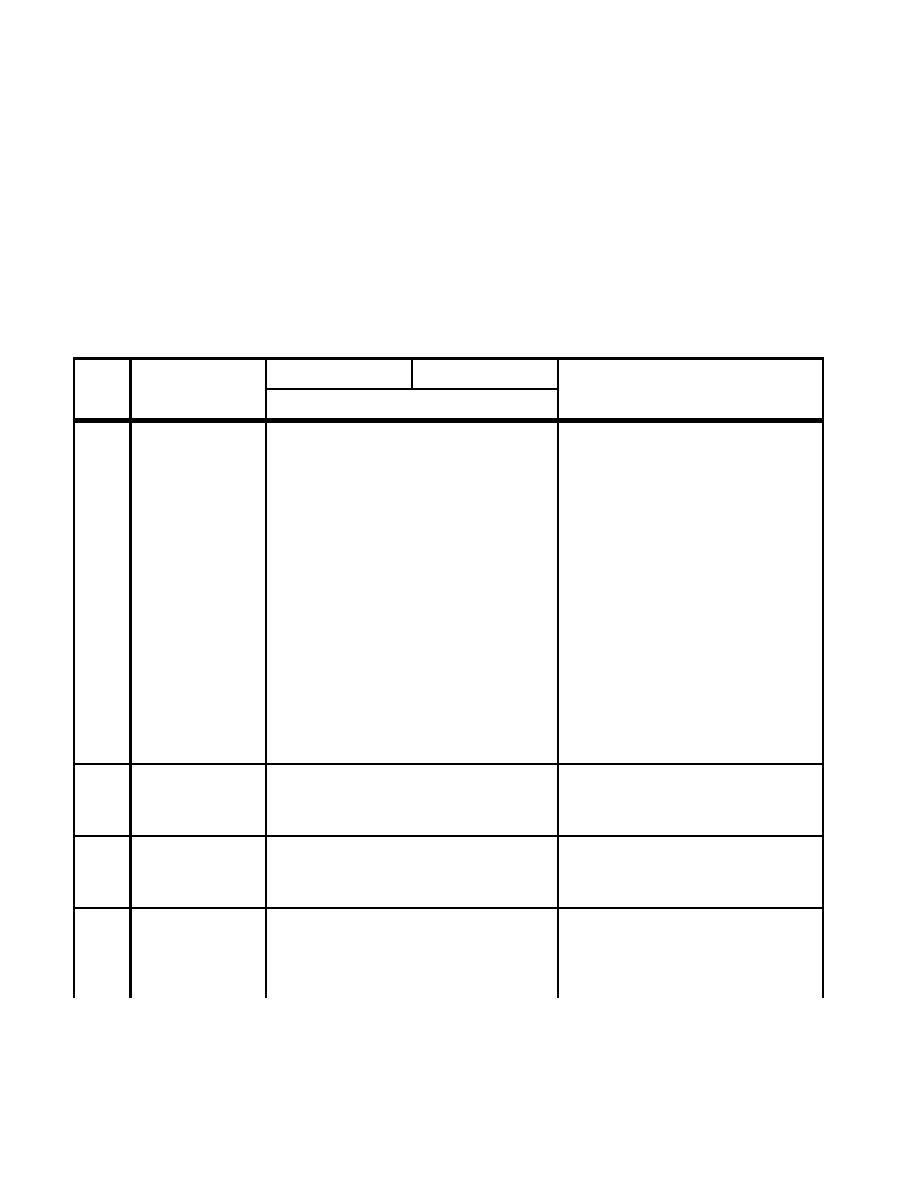
Chapter 6
rehabilitating an existing apron, provide the maximum wingtip separation the existing apron size
will allow (up to 15.3 meters (50 feet), but not less than 7.7 meters (25 feet). This additional
separation is both desirable and permitted. At non-AMC bases, the maximum separation which can
reasonably be provided for these aircraft is desirable.
6.5.8.1. Jet Blast Considerations. The clearances listed in Table 6.1 do not consider the effects
of temperature and velocity due to jet blast. The effects of jet blast and minimum standoff
distance to edge of pavement are described in Attachment 8.
6.5.8.2. Cargo Loading Considerations. Consider the effects of jet blast on aircraft loading
operations and cargo storage locations when you design a layout for parking cargo aircraft.
Table 6.1. Fixed-Wing Aprons.
Class A Runway
Class B Runway
Item
Item
No.
Description
Requirement
Remarks
As a general rule there are no
Variable
1
Size and
standard sizes for aprons. They
Configuration
are individually designed to
For Army and Air Force
support specific aircraft uses. The
requirements,
dimensions are determined by the
see criteria listed below and AFH 32-
number and type of aircraft
1084.
involved, the function of the
apron, the maneuvering
For Navy and Marine Corps
characteristics of the aircraft, jet
requirements,
blast of the aircraft, and the degree
see Navy NAVFAC P-80.
of unit integrity to be maintained.
Other determinants are the physical
characteristics of the site,
relationship of the apron area to
other airfield facilities and the
objective of the comprehensive
plan.
Parking Space
Design aircraft wingspan
Army and Air Force airfields. For
2
Width
CV-22 Parking dimensions, see
("W")
Figure 6.38.
Parking Space
Design aircraft length
Army and Air Force airfields. For
3
Length
CV-22 Parking dimensions, see
("L")
Figure 6.38.
3.1 m
4
Army and Air Force airfields,
Wingtip
[10 ft]
aircraft with wingspans up to 33.5
Clearance of
m [110 ft]. For CV-22 wingtip
Parked Aircraft
clearances, see Figure 6.38.
("P")
6-6


 Previous Page
Previous Page
